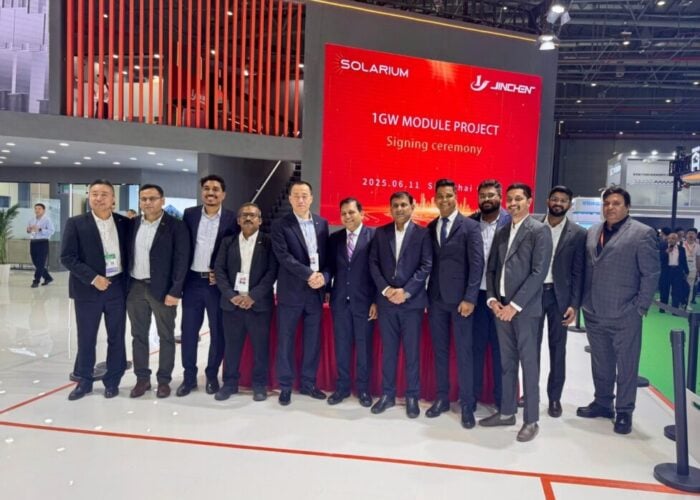
The US market shipped US$12.5 billion of modules in 2022, with the average dollar per watt value slightly increased but still remains low, according to the country’s Energy Information Administration (EIA).
Its 2022 Annual Solar Photovoltaic Module Shipments Report, released yesterday (31 July), revealed that the US had nearly 31.6 million module shipments in 2022, up from nearly 29 million in 2021, and representing an enormous rise from a decade ago when the figure stood at just 4.6 million.
Unlock unlimited access for 12 whole months of distinctive global analysis
Photovoltaics International is now included.
- Regular insight and analysis of the industry’s biggest developments
- In-depth interviews with the industry’s leading figures
- Unlimited digital access to the PV Tech Power journal catalogue
- Unlimited digital access to the Photovoltaics International journal catalogue
- Access to more than 1,000 technical papers
- Discounts on Solar Media’s portfolio of events, in-person and virtual
For the first time in five years, the average value per watt of PV modules increased, yet remains steady compared to previous years. In 2022, it reached an average price of US$0.39/W, up from US$0.34/W the year before. However, prices still remain low compared to 2010 when the average value of PV modules was US$1.96/W.
Module prices in China this year have fallen further – to as low as RMB1.5/W (US$0.21/W) in early June – in the past few months with polysilicon dropping to less than US$10/kg last month and expected to remain at that price range for a while.
Moreover, data from the agency shows that modules manufactured in the US during 2022 reached five million, increasing by a million from last year’s figures which were marked by: the passing of the Inflation Reduction Act in August; the launch of a plethora of domestic PV manufacturing announcements from QCells’ vertically integrated 3.3GW PV manufacturing; First Solar investing US$1.1 billion in a new thin-film module facility in the US; Heliene adding 1.5GW/1GW of tunnel oxide passivated contact (TOPCon) cell and module production in Minnesota; Enel North America with a 3GW cell; and module assembly plant in Oklahoma from solar developer Invenergy partnering with module manufacturer LONGi for a 5GW plant among others.
Despite supply chain issues and the implementation of the Uyghur Forced Labor Prevention Act (UFLPA) which caused 2GW of solar PV modules to be retained by the US Customs and Border Protection Agency in 2022, the US imported 27.8 million modules last year, a more than four million increase on 2021 figures.
More than ten million modules were imported from either China, Singapore, Taiwan or Vietnam, followed by six million modules coming from South Korea, Thailand or the United Arab Emirates and four million from Malaysia. Nearly seven million modules had the location undisclosed.
Similar to what happened in 2021, the EIA noted that fewer companies have responded to the survey which affected the publication of several data, including specific types of PV cells and modules, or by region.
“Fewer companies now report on the EIA-63B survey because of company consolidation and changes to strategic planning of companies in the US solar photovoltaic (PV) industry. As a result of fewer survey respondents, the data tables in the 2022 report are less detailed than in past reports to protect the confidentiality of the individual company-level data,” said the EIA.







